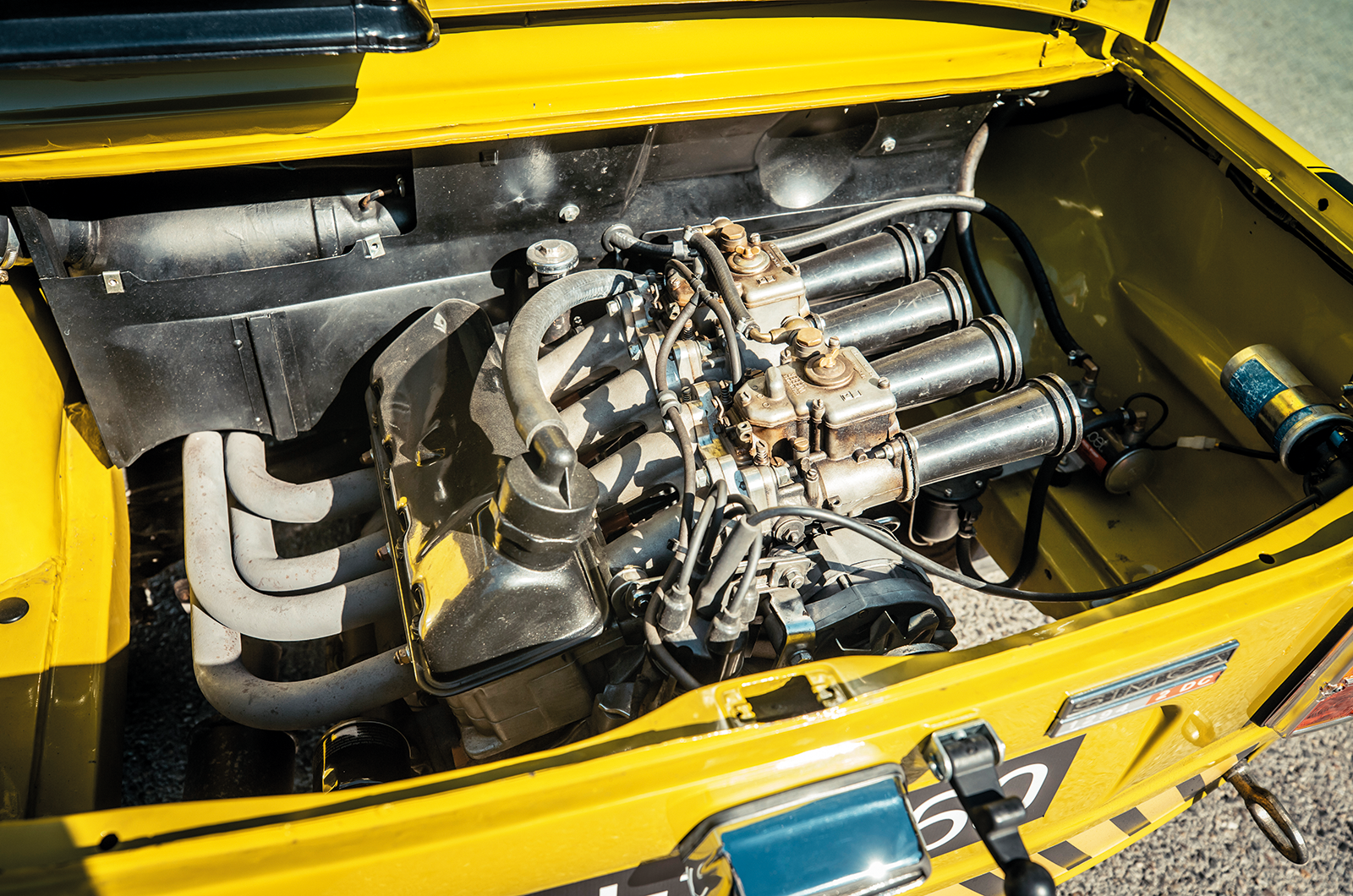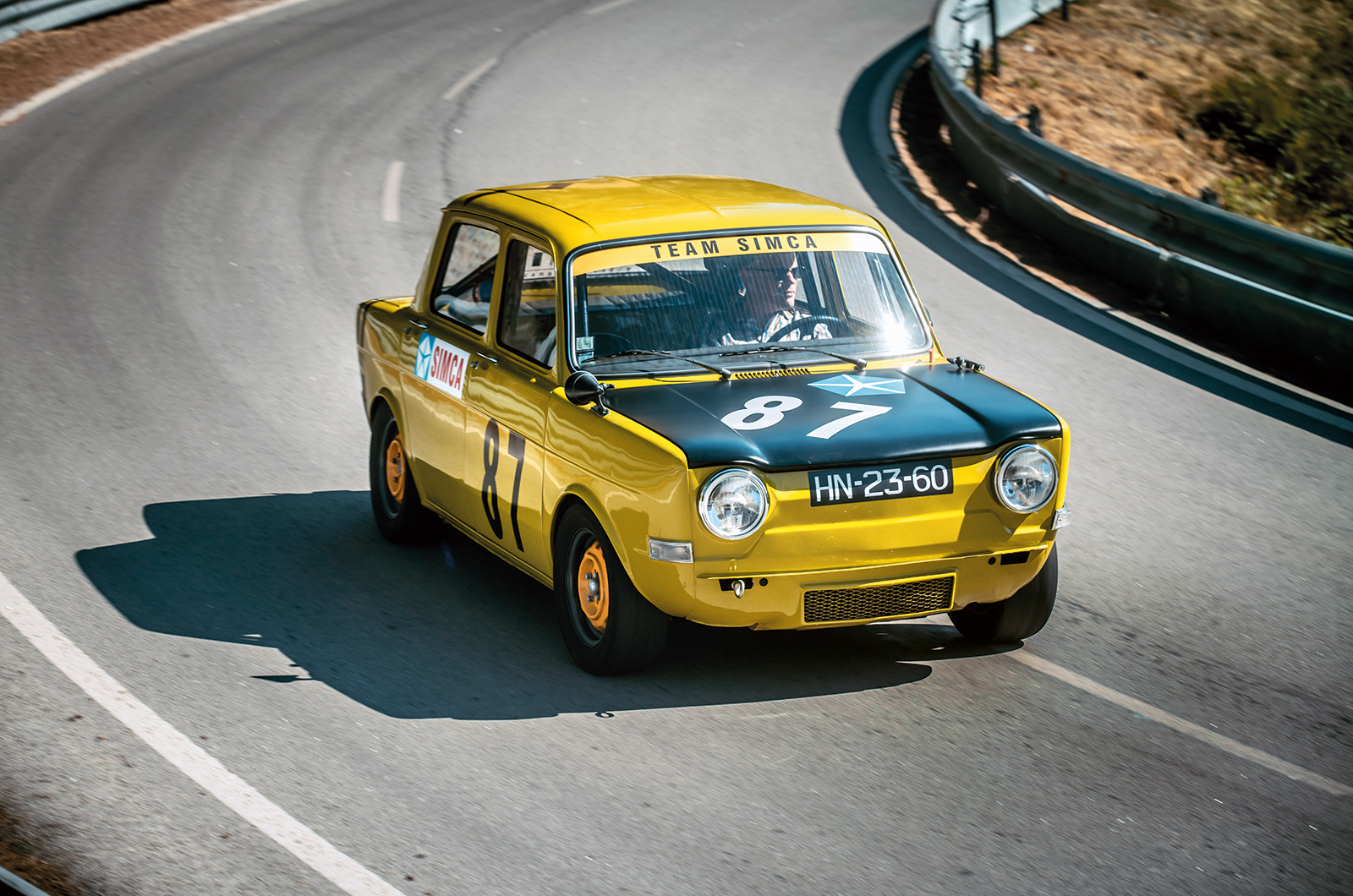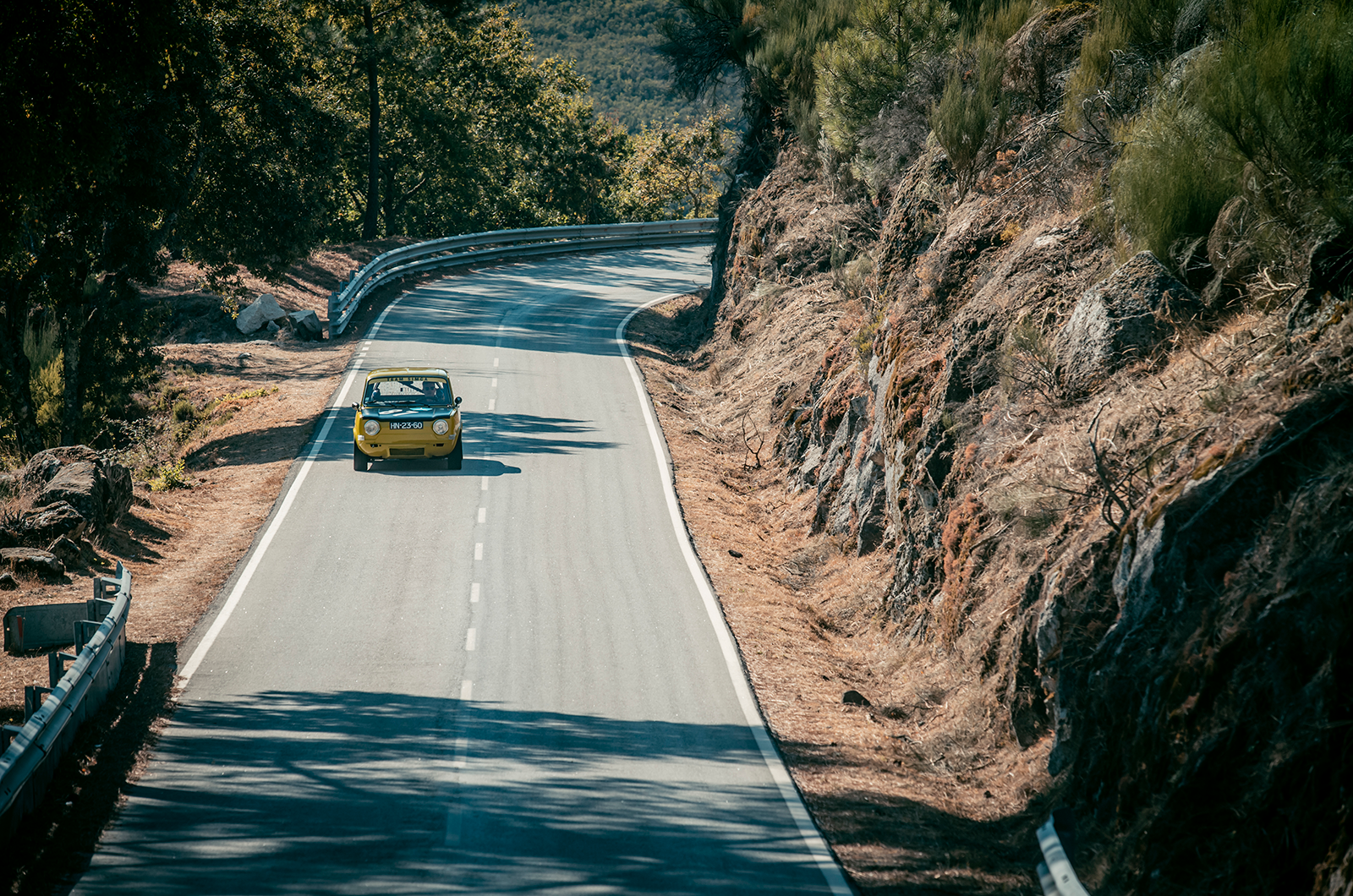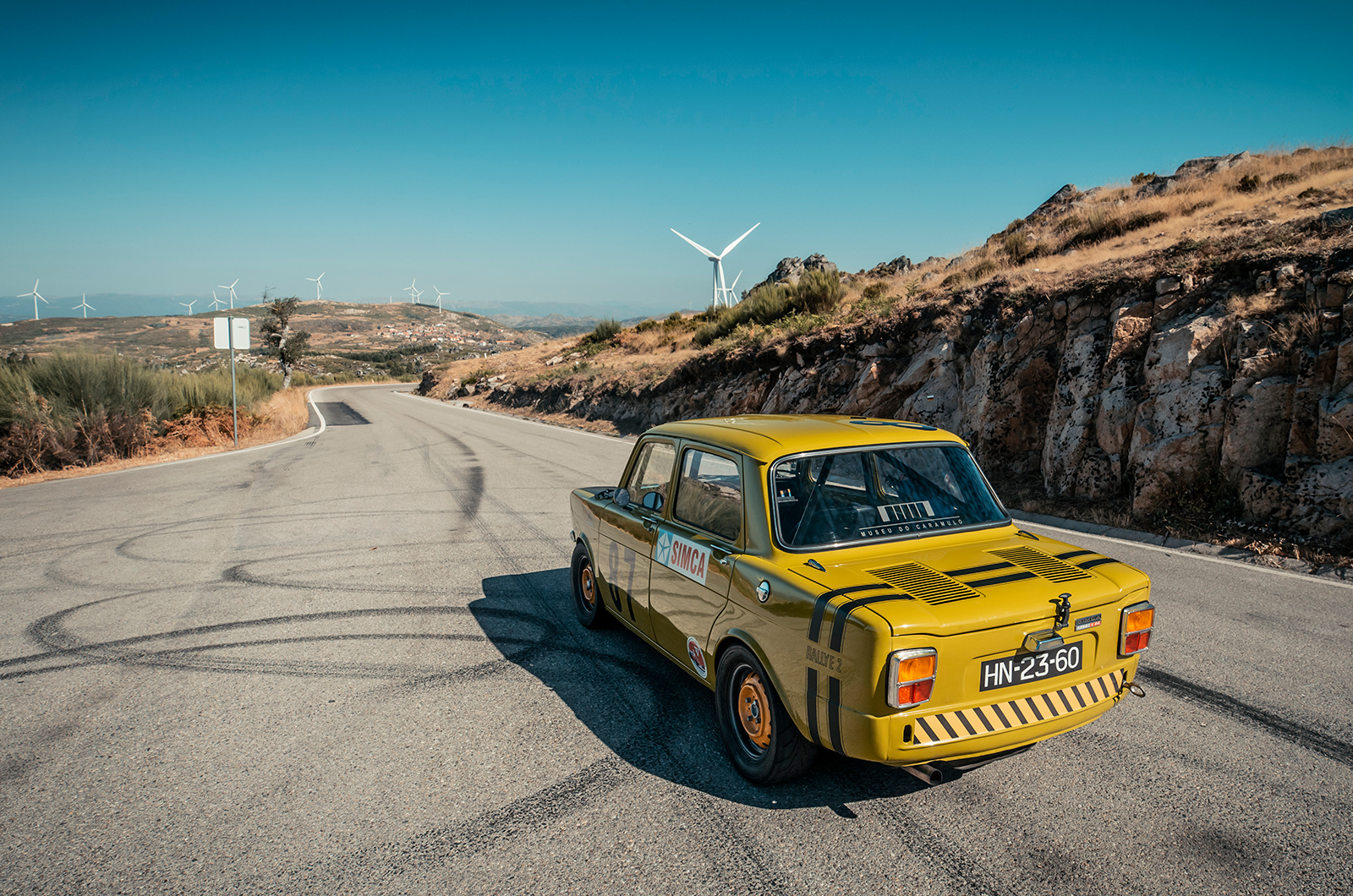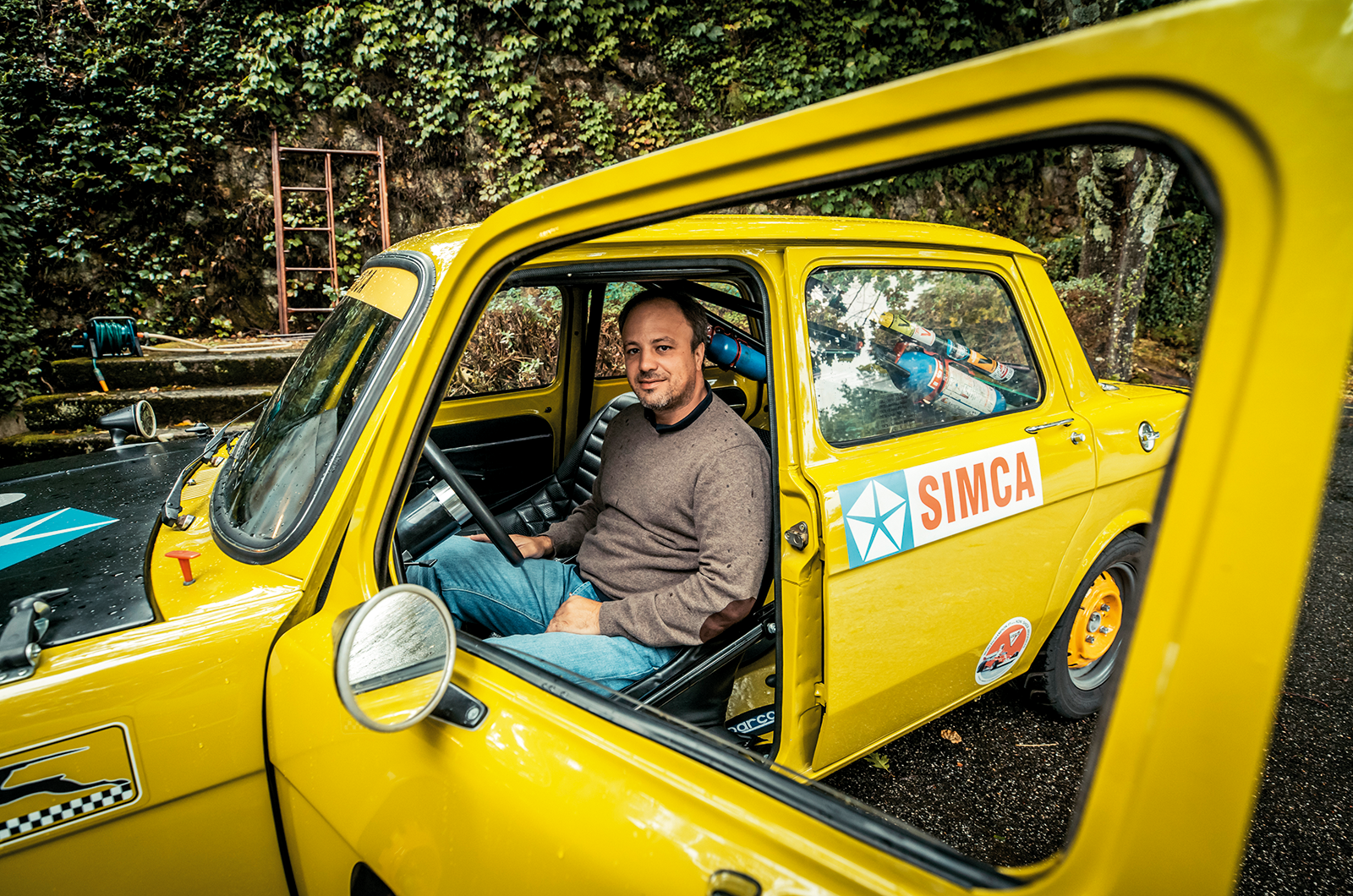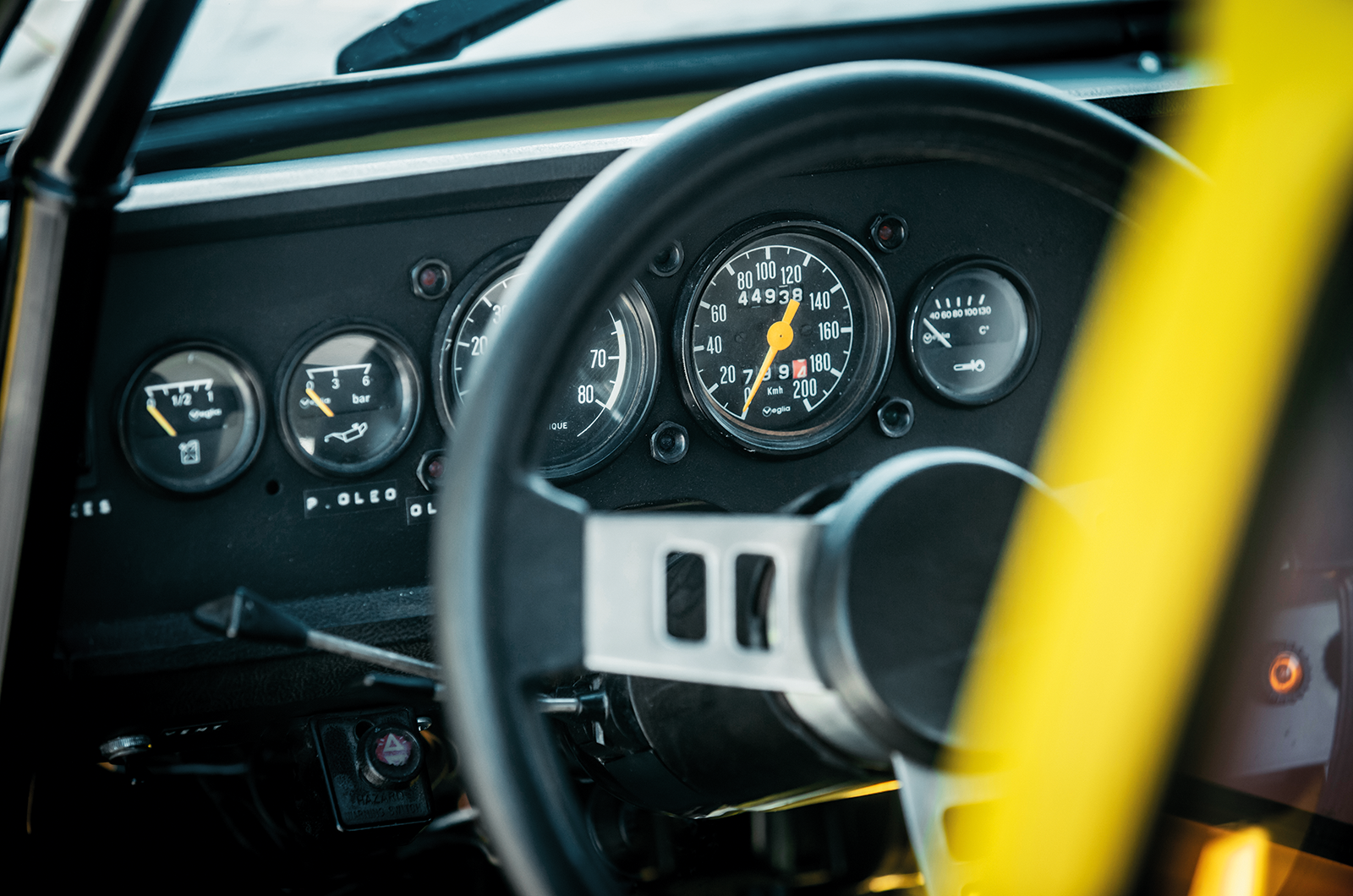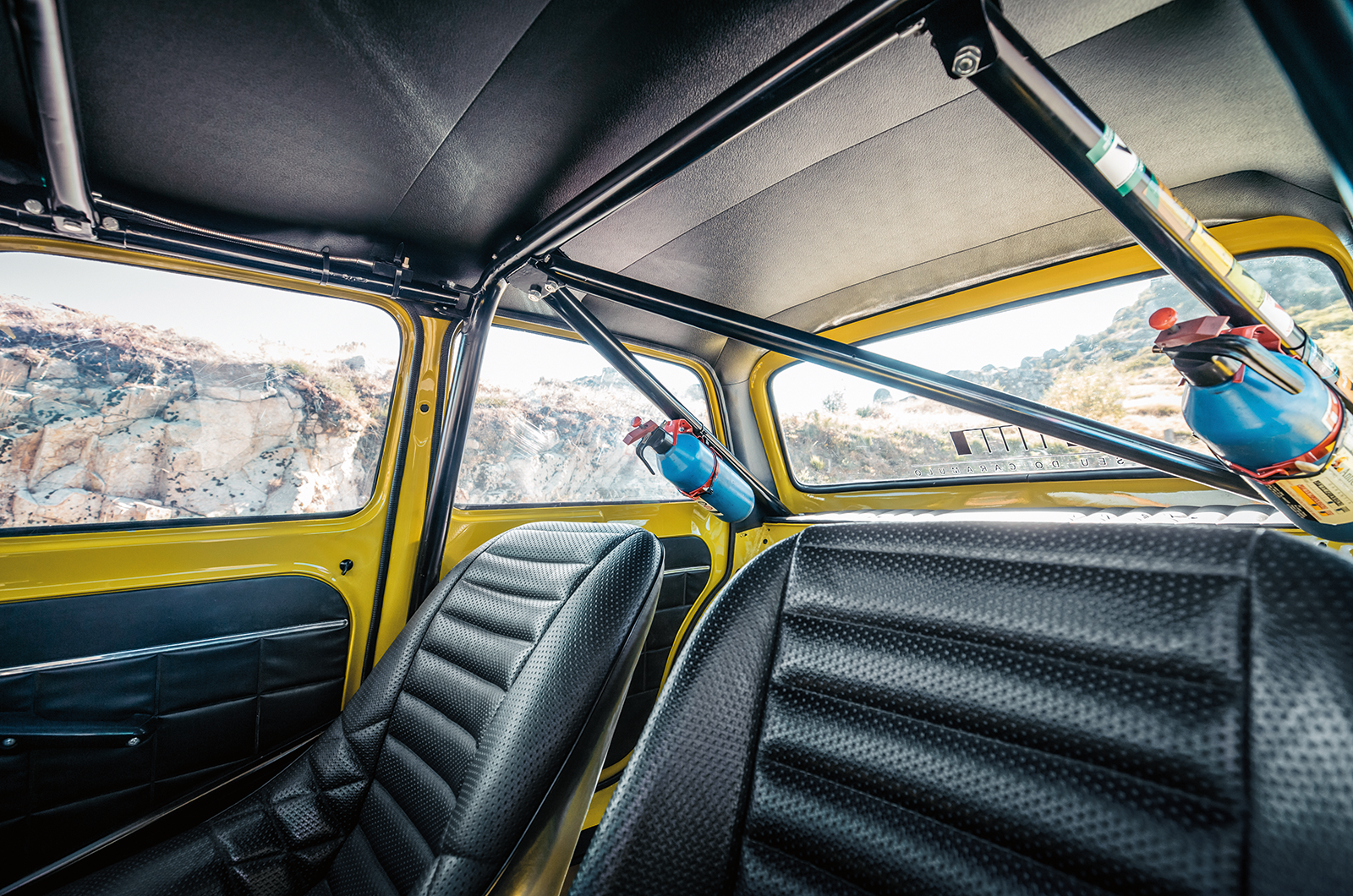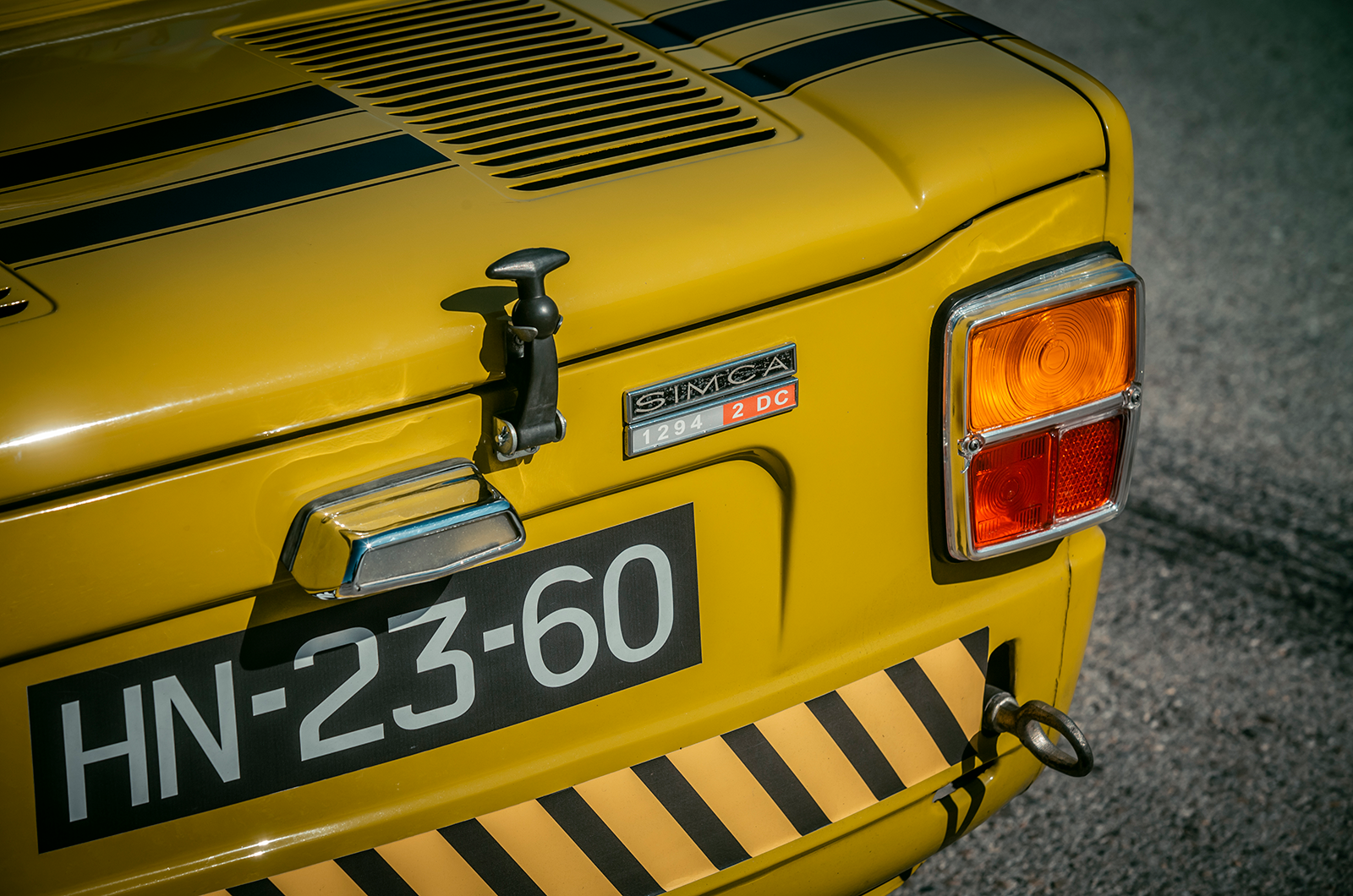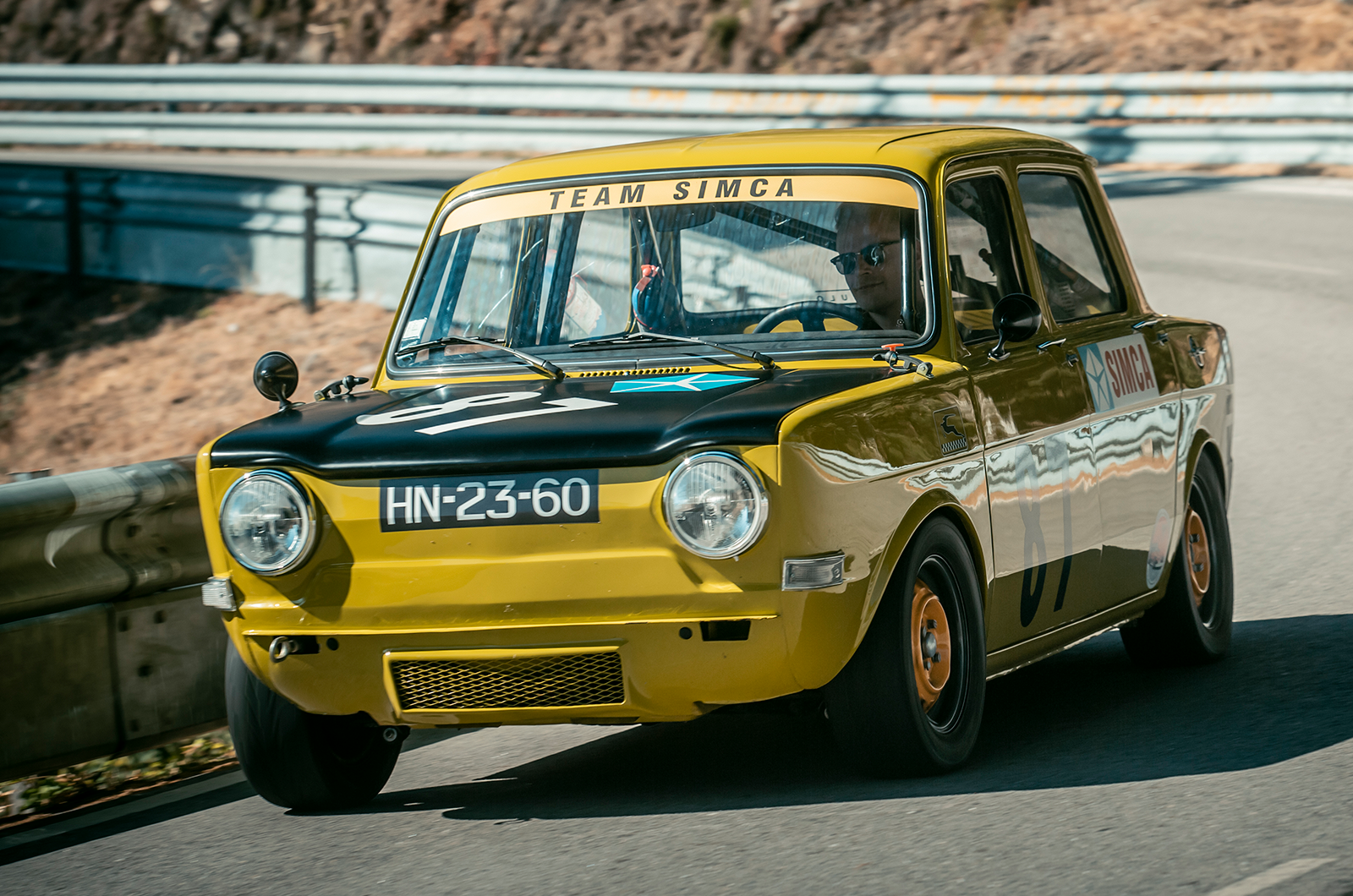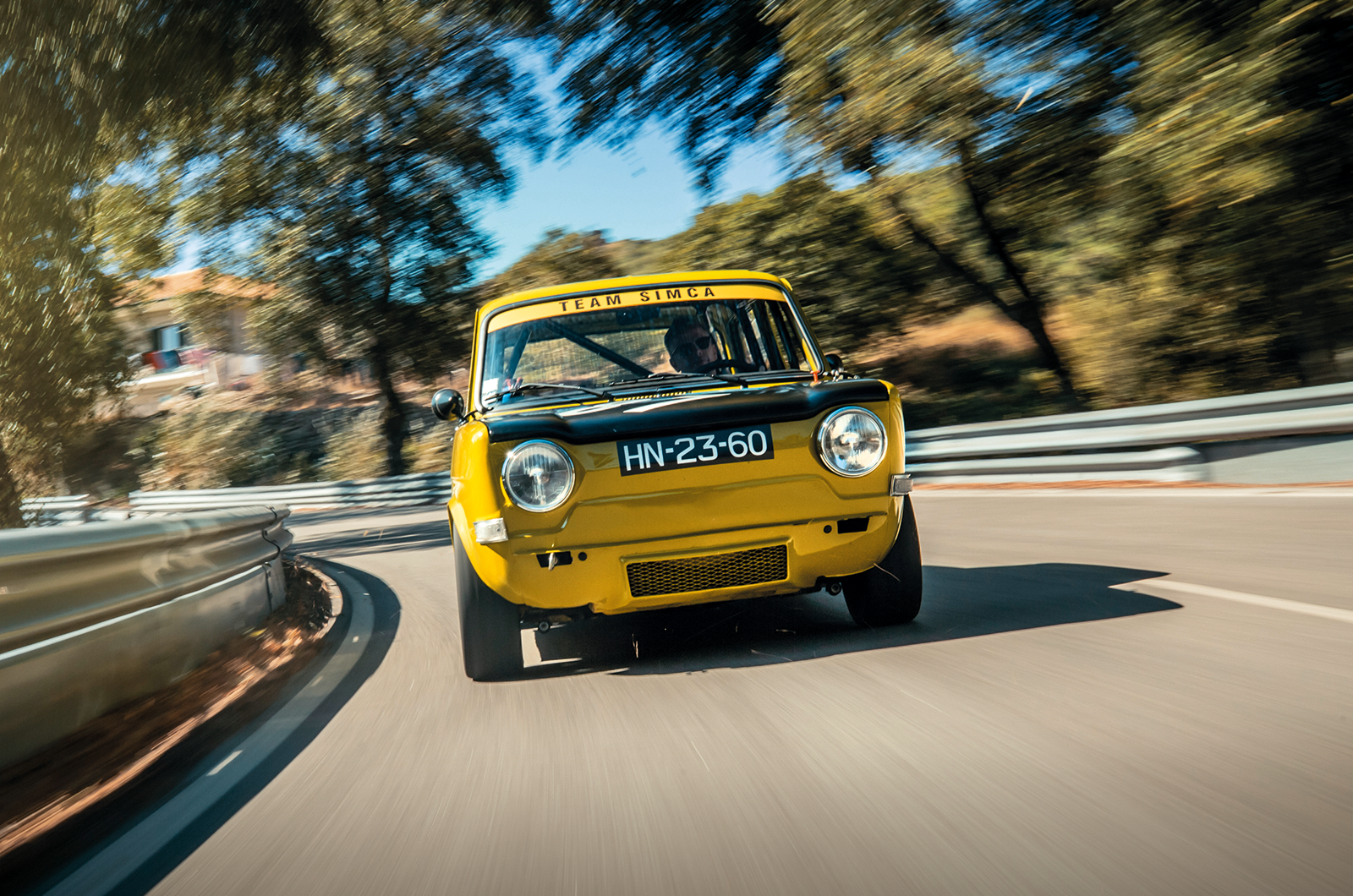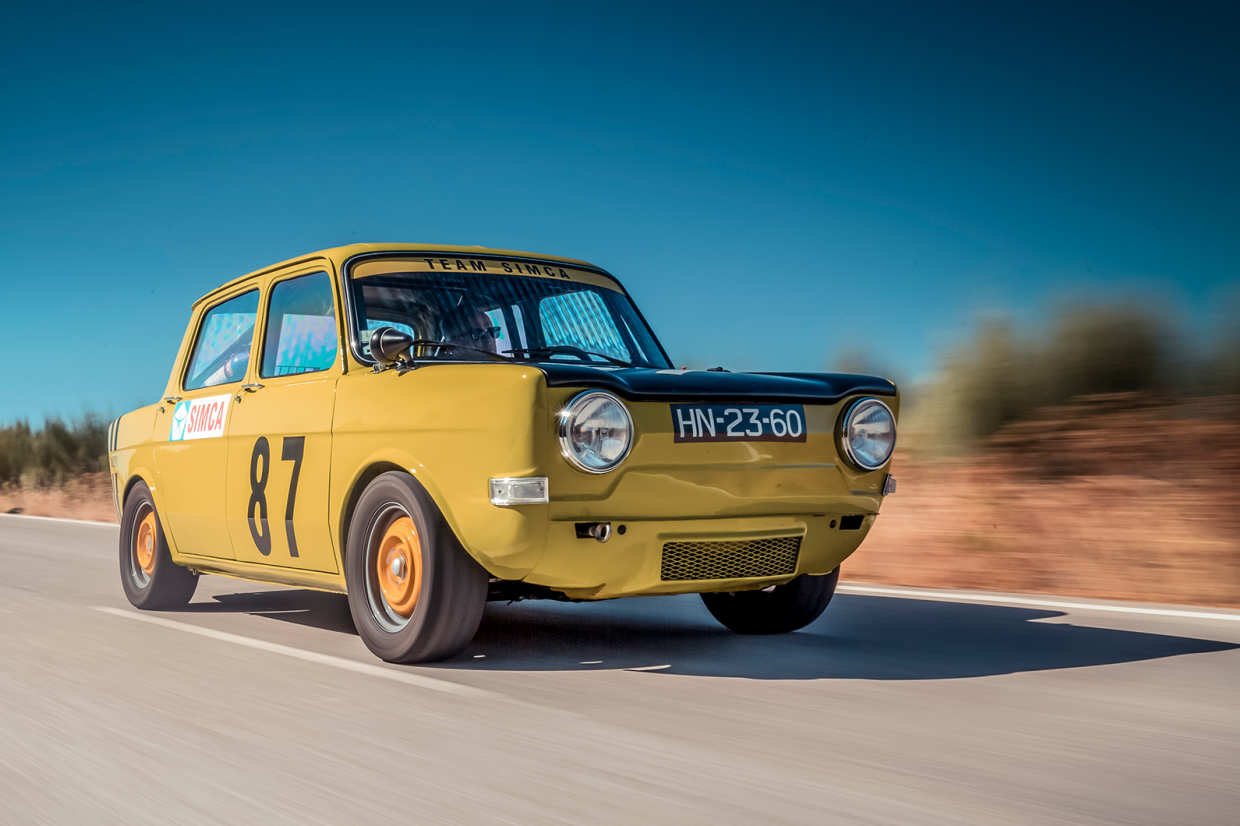
The road stretches from here to who knows where.
The backdrop, a mountain range, isn’t just big, it defines bigness, your main points of focus being the battered Armco and the steepest of drop-offs.
This isn’t the ideal place to be analysing a racing car that is precious rather than merely valuable. All eyes are on you.

The Team Simca badging is a tribute to works fettling
The unruly cacophony from out back crowds all other thoughts; the 1.3-litre four-banger sounds implausibly potent despite its mere 86bhp.
There is nothing so sissy as sound-deadening here. Throw in super-sticky tyres and unyielding dampers, and all sense of normality evaporates.
The car’s owner, João Lacerda, likens his Simca 1000 Rallye 2 to a go-kart, and the analogy is apposite.
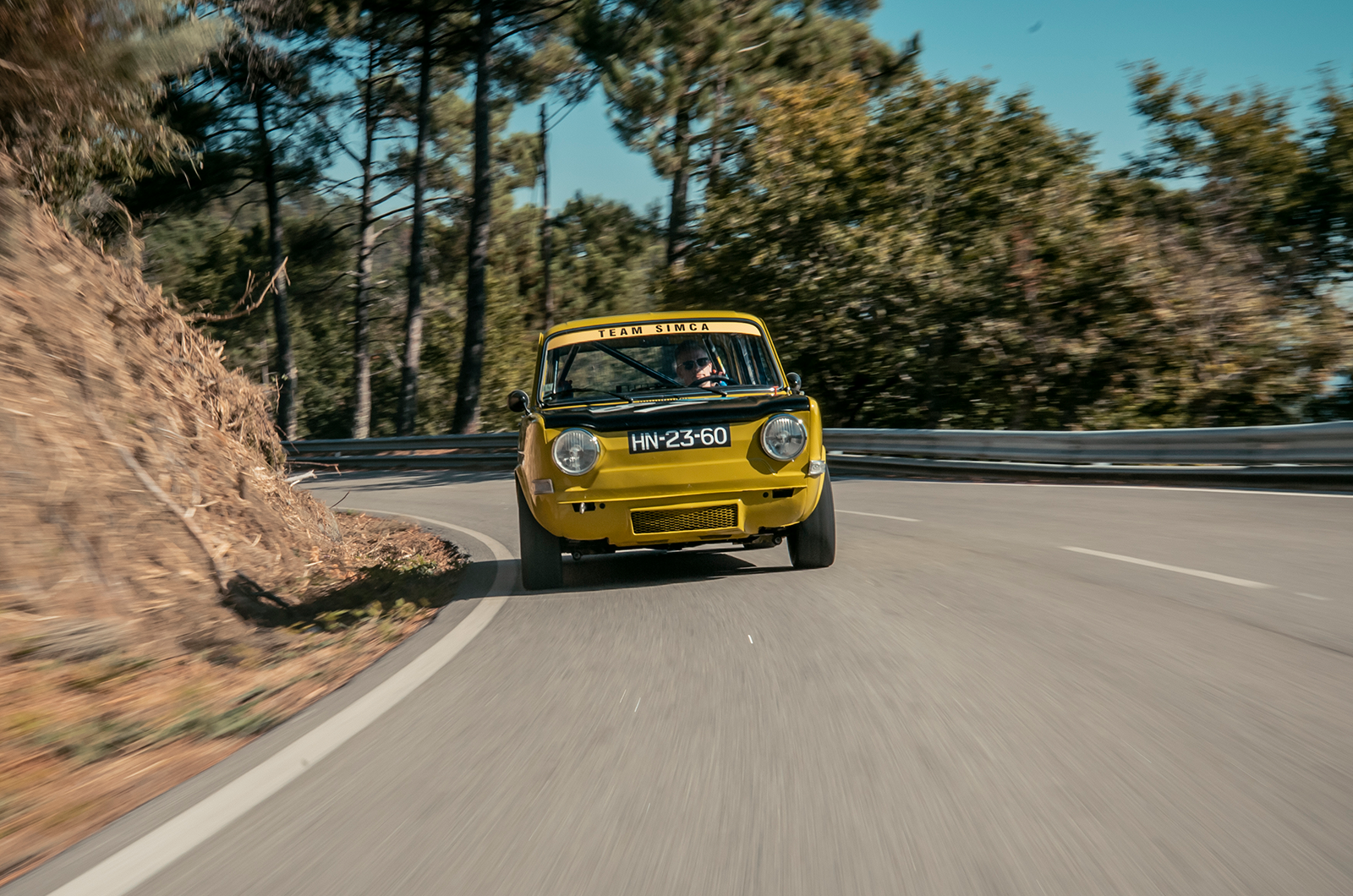
It really is a hoot to drive

